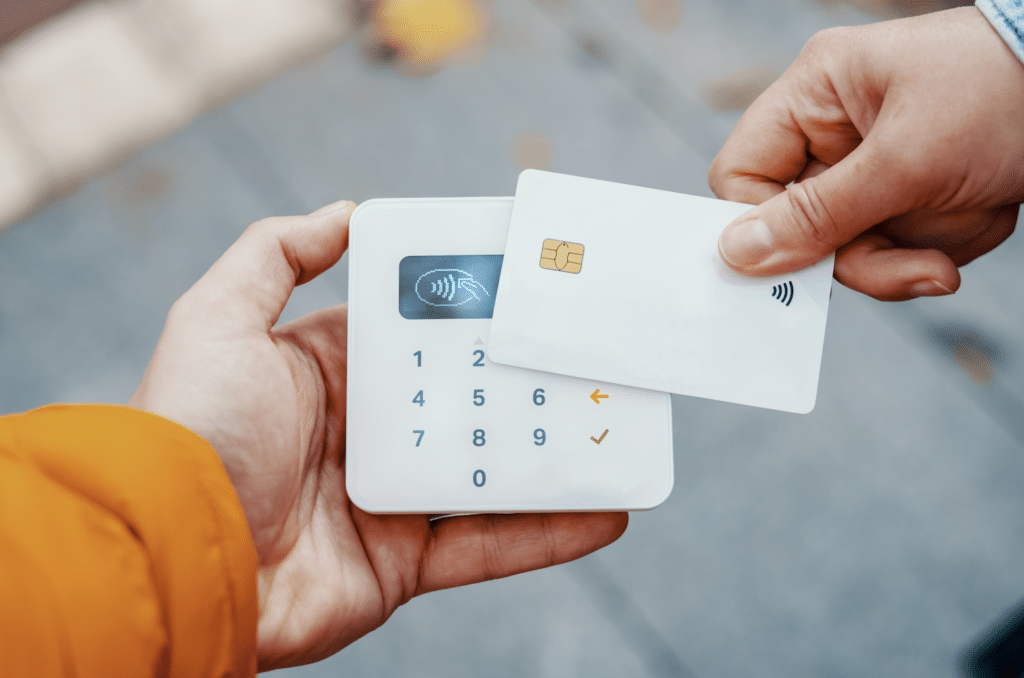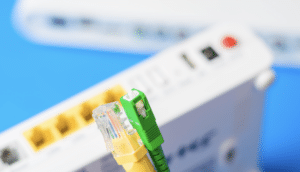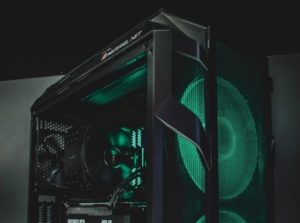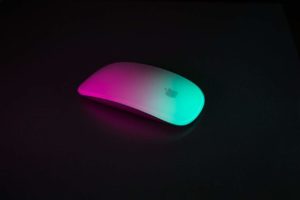NFC is the acronym for Near Field Communication technology. Instead of manual entry or retrieval from databases, wireless data exchange in accordance with international transmission standards can be carried out in a matter of seconds using NFC business cards. The ability to control different, compatible end devices such as Smartphones or tablets.
Features and functionality of NFC business cards
Data is exchanged via NFC over distances of ten to twenty centimetres. The data signals are forwarded by electromagnetic induction. Classic RFID technology has a longer range, but, like Bluetooth, is not nearly as fast as NFC data exchange. The heart of an NFC business card is a memory chip with a micro antenna. The diameter of both together can be roughly compared to a one-euro piece.
The storage capacity of an NFC tag is not large at 168 to 2.048 bytes, but it is sufficient for basic contact information. If you buy a suitable app for your mobile, compatible end device, you can personalize the data on the tag as you wish. This expands the possible uses in a very short time, for example for marketing purposes.
Advantages and disadvantages of the two variants
Two variants of stored data can be considered for wireless data exchange over a short distance. Each has the following advantages and disadvantages depending on the intended use:
Variant one: Permanently stored contact data
The storage data is stored once in the code of the NFC business card. The Smartphone can scan them from here and add them to the virtual address book. However, a new code must always be created for the smallest data change. Because adjustments are not possible with this version. Permanently stable data can be called up at any time without contact.
Variant two: Adaptable contact data
With Variant Two, NFC business cards can be changed later at any time. Whether just a name or the entire contact list depends on the intended use and the user requirements. Another advantage is the possibility to save a personal branding on the code of the NFC business card and to change it again and again.
Requirements for use
The development of NFC technology had several backgrounds. On the one hand, this should improve the security of contactless payment transactions. It is almost impossible for thieves to call up the code without direct, close physical contact. Another reason is the high speed of simple data retrieval with subsequent forwarding, for example account inquiries for contactless payment.
All you need is a card with NFC technology and a receiving device for retrieval. Almost all mobile phones of recent years and the latest operating systems can be set to NFC with a few clicks. Very young mobile technology is already delivered with it from the factory. Tablets, smartwatches or speakers that are not yet NFC-capable can usually be expanded without any problems. Subsequent adjustment to this function is also possible with at least 95 percent of all smartphones and other mobile end devices used on the market.
Usage examples
NFC technology is very popular at universities. They have an NFC chip in their institute ID card. leave that easily with NFC business cards transfer small sums of money, for example for the often due copy money for teaching materials. Small amounts of up to 25 euros can also be paid contactlessly and quickly via NFC with GiroGo from Deutsche Sparkasse. Other current common usage examples include:
NFC business cards according to aspects of digitization and environmental protection
Without a doubt, high data security is a forward-looking aspect on the pro side of NFC technology. The improvements go far beyond purely technical considerations:
Digitalization
Digitization is a complex area of today's corporate management. Enormous amounts of data must be transmitted as quickly and error-free as possible. Transmission distances involve the risk of data loss, data corruption and data theft. Despite constant improvements, such risks have not yet been completely eliminated.
Conversely, Data transmission the safer, the shorter the transmission path and the transmission time and the lower the exchanged data volumes. With the many tiny details of digitization, this simplifies the entire process control, especially in the exchange between business partners, but also with end customers and internally between departments.
While new data exchange on a large, digital scale requires constant updating of files, NFC technology is completely sufficient for a thousand small purposes. A few basic data are practically exchanged in the blink of an eye. If constant data changes are necessary, a supplement or change on the NFC chip is sufficient and the update is already complete.
Sustainability
As long as the power supply to the receiving device is guaranteed, any desired action can be carried out without the NFC chip having to be supplied with power. Simply pay with NFC business cards or transfer data, only consumes a few grams of plastic once in many years of use.
The latest variants are made of recycled material or bioplastics (e.g. made of sugar cane fibers instead of petroleum). In the long term, they leave a significantly smaller CO2 and pollutant footprint in the environment than conventional plastics. Durability and functionality are equal.
Conventionally transmitted amounts of data require enormous amounts of energy in the corresponding servers. The data from NFC business cards reaches the recipient without any energy consumption. The technology is therefore energy-neutral. Compared to paper business cards, changes to the digital lettering can be made quickly and without paper.
A complete replacement of the entire card is only necessary when the chip is finally used up and the plastic suffers from material fatigue beyond recognition. Experience has shown that this is only the case after decades of use.
Conclusion
Today, payment transactions can be easily made with NFC business cards without inserting or typing. Many simple data transmissions are now taken over by sustainable, data-secure NFC technology. It relieves many processes in the age of digitization and does not require any complicated preparations or equipment.








